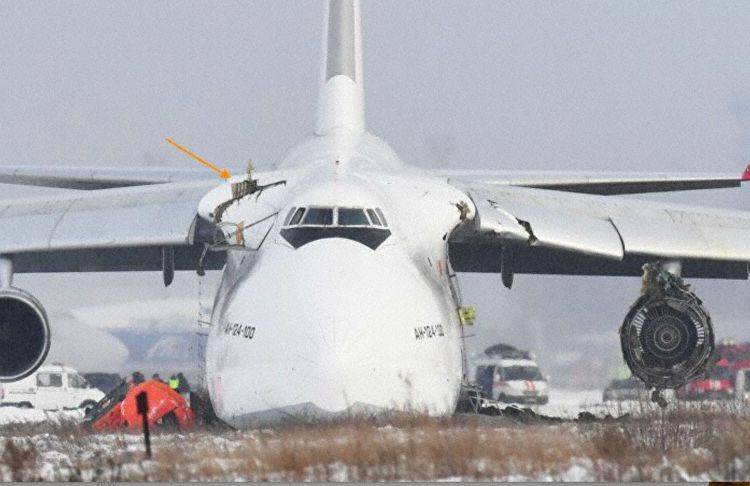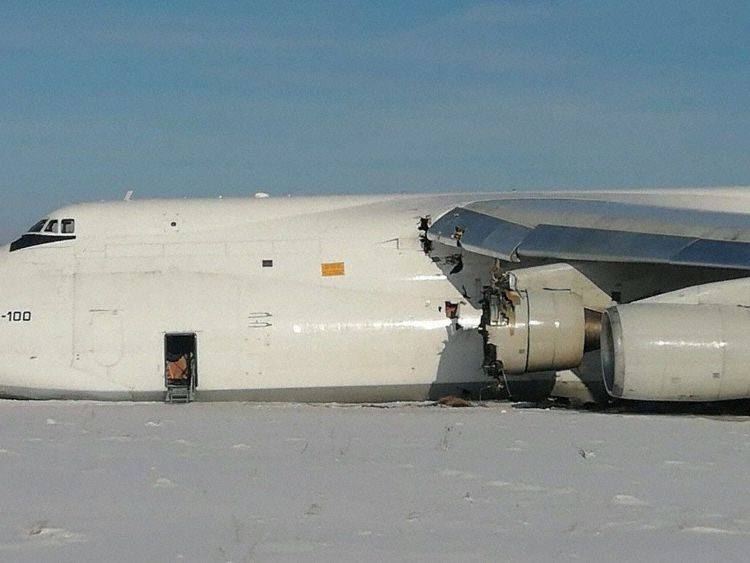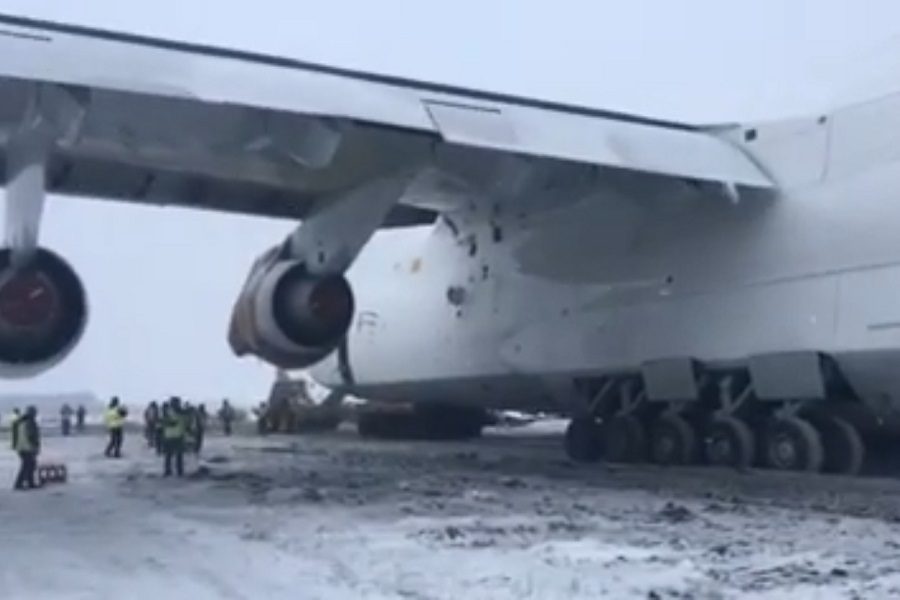Tanks finally manage to move the enormous Antonov An-124 off the Russian mud, two weeks after its spectacular landing on runway 25 at Tolmachevo airport. Moving the aircraft was almost as impressive as the pilots’ feat to save it in the first place.
There were at least two famous historical occasions when the Russian winter brought invading armies to a halt in the mud. Well, two weeks ago the same impenetrable mud was the only thing that could stop Volga-Dnepr’s An-124. The aircraft’s crew had managed to land it, but stopping it was another matter.

Part of the fan disk of the No.2 engine on the troubled Antonov, cut its way through the fuselage. It severed various cables and lines in the process. This caused a total electrical failure, making it impossible for the Russian crew to speak with ATC, or even to each other. It also meant they had no way to move their flaps, no brakes, no spoilers and no thrust reversers. The damage was such that they couldn’t even shut down one engine until three hours after landing.
Somehow, the pilots managed to bring the plane in for a safe landing, with no instruments. Impressive in itself, considering the aforementioned damage. And the fact they were carrying 85 tons of car parts and all the fuel for a trip to Austria.
The Antonov Is Stuck In The Snowy Mud
With no way to stop, the plane had a runway overrun. There was plenty of level ground beyond the runway, and the aforementioned mud did its job. The An-124’s main landing gear is actually designed for rough fields and stayed intact. However the nose gear eventually collapsed. After that, the aircraft took another 150 metres or so, to come to a halt.
…and there it stayed. The plane was now properly stuck. Its nose had dug its way into the ground and until yesterday, it was still there. Crews presumably removed fuel and cargo, but vehicles even for that would need to negotiate the terrain. And then came the job of moving the plane itself off the Russian mud.

So, what do you do when you need to move a bit over 180 tons of aircraft, stuck in the mud? Well first you need to get to it. Then, you dig up that nose and clear the wheels in the main gear. This is quite a big job in itself. Getting the heavy cranes and other necessary vehicles, is one thing. Clearing a path for them in the mud, is another. And then rigging the plane to lift it, is trickier still.
Remember, there are only 20 Antonov An-124s in existence. This aircraft suffered a lot of damage in the incident. But it is reasonable to assume that Volga-Dnepr will have plans to fix it, and return it to service. So finding a way to move the aircraft out of there and into a repair facility is definitely the way to go. Without damaging the plane further, if at all possible.
Russian Tanks, Mud And A Big Flat-Bed Trailer
The video below appears to show that the nose of the aircraft is loaded onto a truck bed. It looks like the kind of multi-axle, multi-wheel bed whose normal job is to carry 60-ton tanks. And if you’re going to bring something like that, you might as well bring the tank, too.
The tracked vehicles in the video are two BREM-1M armoured recovery vehicles. Each is basically the lower-end of a Russian T-72 tank, with a crane and recovery gear replacing the turret. Crucially, it still has the very wide tracks of the Russian tank it originates from. Which means, it can avoid getting stuck in the mud. Each also has the 1000hp diesel engine of those tanks.

Even More Complicated Than It Looks
The video doesn’t show the preparation that the Russian crews would have had to make, all in the mud. It would be quite considerable, both to lift the nose and clear the mud in the main gear. Russian crews would have also cleared a level path back to the runway, for the plane to get to hard ground again.
The complexity of this operation may be relevant to the delays in the investigation of this incident. Two days ago Konstantin Vekshin, Volga-Dnepr’s Chief Commercial Officer, announced that the company grounded its fleet of 12 An-124s. He said that investigations into the accident have not been as fast as they would like. This could be in part due to political issues.
So they decided to ground the aircraft, until they have more information from official sources. This is a big deal, in these troubled Covid-19 times, when cargo operators are swamped with work.




1 comment
George Rivera
Great hand flying, pilots and great work rest of crew. I love these planes and I highly respect the crews that fly and keep them flying.